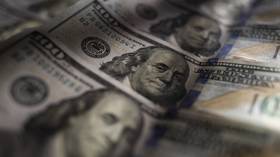Tiger Woods struggles to survive the American Dream

Eldrick “Tiger” Woods was not even one year old when his father, Earl, began teaching him golf. Former US Army officer, Earl would go on to write a book, “How to raise a Tiger,” a self-congratulatory tome which I saw in many homes in Canada in the late-90s.
Media, sponsors and fans fell for this highly focused young man who played with aggressive, robotic consistency. When he was flogging his book, Earl claimed that he only wanted his child to enjoy himself, that scores were unimportant. That 9-year-old Eldrick found joy by shooting low scores. The former Green Beret’s lies would later come back to haunt his son.
“The world will be a better place to live in by virtue of his existence and his presence,” said Earl in 1996. Having worked for many years with tennis players, the sacrifices, suffering, and loneliness endured to reach even a decent level is soul crushing. Endless hours of practice, play, gym, travel and waiting. Now add race, parental, media, sponsors, public and peer pressure. Tiger was not raised to be a productive member of society; he was raised to win. To surpass the American dream, his father had achieved by design. Eldrick never stood a chance for what came next.
The facade shattered
On Saturday, September 7th, 1996, I was with my soccer team to play a tournament in storm hit Oakville, Ontario. We took Bronze and $3,000, plus tickets to the Bell Canadian Golf Open. We raced to the nearby Glen Abbey golf course to witness ‘Tigermania.’
I was envious. Two years younger, miles prettier, with decades of success ahead, he matched established pros like Jesper Parnevik and Tom Lehman. He earned 10-times more than our entire team did in Oakville and wouldn’t travel 1,800 kilometers home on a stinking bus with 17 footballers and support staff. A pro less than a month, he already had $60 million in endorsements from Nike and Titleist, while my salary, when paid, was $2,000 a month.
Tiger had achieved the American dream, as devised by his father Earl. However, constant pressure from sponsors, media, and public, seemed to create an image that was impossible to maintain. Jesper Parnevik introduced him to Elin, and by marrying the blonde Swede in 2004, the dream was complete. Between my first glimpse of him in 1996 and the birth of their second child in 2009, he’d won 65 professional tournaments and 14 major titles, earning more than $1 billion, the first athlete ever to do so. Three years on from his father’s death, he needed for nothing.
November 2009, the facade shattered, along with the front right of his Cadillac. He was found unconscious near his home, reportedly having fled his wife’s golf club attack. The tabloid media had a field day, unleashing long stored facts of infidelity without fear of retribution. A famous sports star lost his wife and children, and the media frothed with titillation. The same newspaper which disgorged sordid details in December 2009, had months earlier praised Woods’ “majesty." The Tiger was well and truly eaten.
The open secrets
Two elements of the rise and continuing fall get insufficient coverage in media. They’re inconvenient for the American dream. One is racism; second is performance enhancing drug (PED) use and painkiller addiction.
Tiger Woods was promoted as the perfect American and human. A dash and dab of every color, race and creed, the living epitome of global harmony. Sponsors liked him as he wasn’t too ethnic and fans liked his humility. Media let him slide, storing the dirt until his eventual fall.
An Irish golf journalist told me this week, “He’s unlikeable, hypocritical, but what’s happening to him now smacks too much of racism.” In 2008, The Golf Channel’s Kelly Tilghman claimed the only way to beat Tiger was if the other players were to “lynch him in a back alley.” Tiger and his agent called it a “non-issue.” Year after year, the man had to suck it up as idiots racially abused him, because to react would worry sponsors.
In his 2017 book, Woods revealed a history of racial abuse, a far cry from the smiling face for countless, faceless corporations. He’d turn up and play when mere mortals would have crumbled. As LeBron James discovered this week, racism is alive and well in America.
Tiger has admitted an addiction to prescription painkiller Vicodin and sedative Ambien. For a decade, rumors have swirled about PED use. He began a very different training regime after Earl’s death, became buff and questions emerged. In 2014, he was linked to a known doping doctor, by age 40 his body was breaking down, causing concern among some. He was finding that the upkeep of the American dream was challenging in line with regular American life. The prescription painkiller market in the US was worth $24 billion in 2015. After his arrest last week Woods claimed he was suffering from a reaction to painkillers, soon after the dash cam footage came out. Big pharma don’t play nice.
A Tiger’s Tale
How this will end is in Tiger’s own hands. He can play golf again, be a good father, do something, anything. He is rich enough never to have to worry about working again. He could play Forrest Gump and cut lawns for free. He achieved the American dream before he hit 30 and now needs to exit the American nightmare before 50, or he won’t see 60.
His tale should warn parents not to live vicariously through their children. It should warn of the addictive nature of painkillers. It should inform us that racism lives. The story of Tiger Woods should tell us that no person is an island. Seven years ago Ireland’s Padraig Harrington alluded to the pressure Woods was under and how he needed to find a balance with golf. If we are to take anything from Tiger’s Tale, it is that when you’re on the up, you’re everyone’s friend. But when you fall, every dog in the street lines up to pee on your parade. If you’re unlucky, the American dream is followed by the American nightmare and Tiger Woods seems to be living it.
The statements, views and opinions expressed in this column are solely those of the author and do not necessarily represent those of RT.















